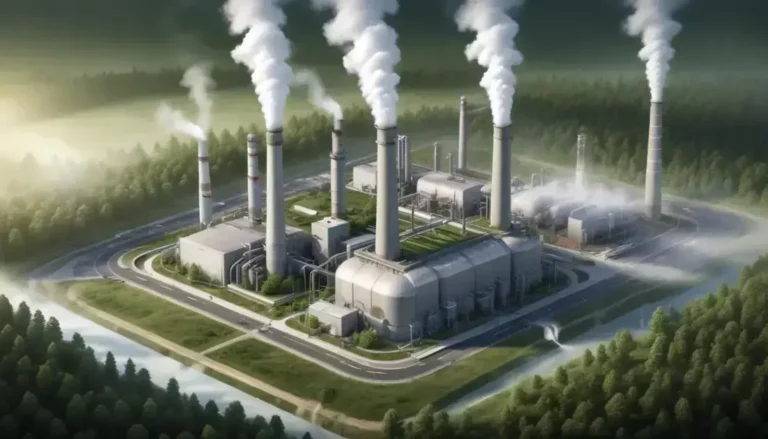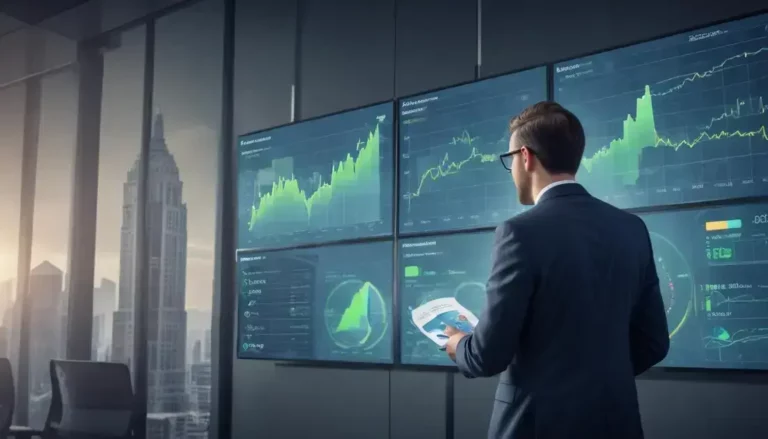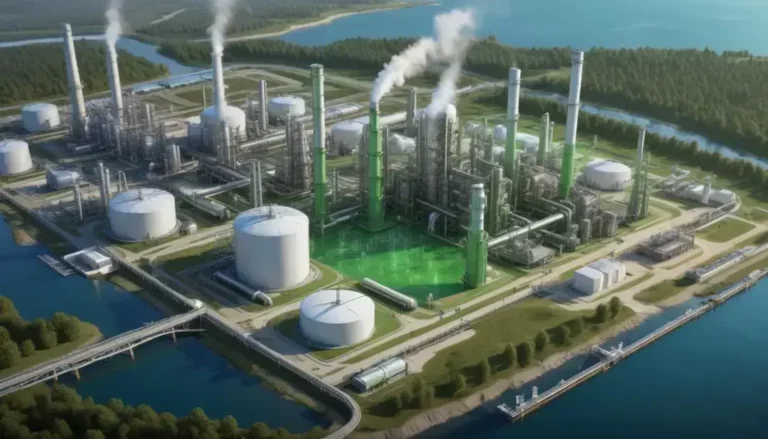Melanie Nakagawa: Leading Microsoft’s Sustainability Efforts
Sustainability in business emphasizes reducing environmental impact through initiatives such as achieving carbon negativity, investing in renewable energy, and leveraging technology for efficient resource management.
Sustainability is at the core of corporate responsibility, and few leaders embody this like Melanie Nakagawa. Discover her remarkable journey at Microsoft and its impact on the world.
Melanie Nakagawa’s role at Microsoft
Melanie Nakagawa plays a pivotal role at Microsoft as the Chief Sustainability Officer. She leads the company’s vision to achieve carbon negativity by 2030. This ambitious goal reflects Microsoft’s commitment to not only reducing its own carbon footprint but also inspiring other corporations to undertake their own sustainability initiatives.
In her position, Nakagawa champions innovative solutions that leverage technology to combat climate change. Microsoft invests heavily in renewable energy projects and sustainable practices, which aim to transform its operations globally. Her work emphasizes the importance of aligning business strategies with environmental stewardship.
Additionally, Nakagawa collaborates with various stakeholders, including government entities and non-profits, to advance global sustainability efforts. She believes that collective action is essential for tackling pressing environmental challenges. Nakagawa often advocates for transparency and accountability in corporate sustainability reporting, helping to set new standards across industries.
Furthermore, her leadership is vital in fostering a culture of sustainability within Microsoft. By engaging employees and encouraging innovative ideas, she inspires a workforce committed to making a positive impact on the planet. Through her efforts, Microsoft aims to create lasting change that extends far beyond its corporate walls.
Impact on corporate sustainability
The impact of corporate sustainability initiatives extends far beyond environmental responsibility. Companies like Microsoft are reimagining their operational frameworks to prioritize sustainable practices. This shift not only contributes to ecological preservation but also enhances corporate reputation.
By committing to sustainability, organizations can tap into new market opportunities and attract environmentally-conscious consumers. Companies that align their missions with sustainable goals often see increased customer loyalty. Furthermore, such practices can stimulate innovation as businesses seek new solutions to reduce their carbon footprints.
Investing in sustainable technologies often leads to significant cost savings in the long run. Energy efficiency measures and waste reduction strategies can lower operational expenses. Additionally, sustainability-focused companies may benefit from governmental incentives and tax breaks designed to foster a green economy.
Moreover, corporate sustainability has a measurable impact on employee engagement. A workforce motivated by purpose is more productive and aligned with organizational objectives. Employees take pride in working for companies that prioritize social responsibility, enhancing morale and reducing turnover rates.
Lastly, companies that prioritize sustainability are better positioned to mitigate risks related to climate change. By proactively addressing environmental concerns, they can avoid potential regulatory penalties and protect their long-term viability.
Goals for carbon negativity by 2030
The ambitious goal of achieving carbon negativity by 2030 is a cornerstone of Microsoft’s sustainability strategy. This target signifies that the company aims to remove more carbon from the atmosphere than it emits. To reach this milestone, Microsoft has outlined a multi-faceted approach that integrates advanced technology and innovative solutions.
Central to this initiative is the commitment to invest in renewable energy. Microsoft plans to power its data centers and operations entirely with renewable sources, including wind and solar energy. This transition not only reduces the carbon footprint but also sets a standard for the industry.
Moreover, Microsoft is focusing on carbon capture and storage technologies to actively remove carbon dioxide from the atmosphere. By partnering with various organizations, the company aims to enhance the efficiency of these technologies while accelerating their deployment in the market.
Engaging with supply chain partners is also a vital aspect of the strategy. Microsoft encourages its suppliers to adopt sustainable practices, creating a ripple effect across industries. This holistic approach ensures that sustainability is embedded in every aspect of the business.
Lastly, transparency and accountability are prioritized. Microsoft publicly shares its progress toward these goals, inviting scrutiny and fostering trust among stakeholders. This commitment to bold climate action positions Microsoft as a leader in the global effort against climate change.
Technological innovation in climate action
Technological innovation plays a crucial role in advancing climate action. As the world faces increasing environmental challenges, innovative solutions are essential to mitigate climate change impacts. Companies like Microsoft are at the forefront, developing groundbreaking technologies to enable effective sustainability practices.
One major area of focus is clean energy technologies. These advancements include solar power, wind energy, and battery storage systems that enhance energy efficiency. By investing in these technologies, organizations can reduce reliance on fossil fuels and decrease greenhouse gas emissions.
Moreover, data analytics and artificial intelligence (AI) are revolutionizing how businesses monitor and manage their carbon footprints. Through predictive analytics, companies can optimize energy consumption and identify areas for improvement. This use of technology enables smarter decision-making that supports sustainability goals.
Another essential aspect of technological innovation is the development of carbon capture and utilization (CCU) systems. These technologies capture carbon dioxide emissions from industrial processes and convert them into useful products. This not only reduces emissions but also turns waste into valuable resources, effectively closing the carbon loop.
Collaboration and partnerships are also vital for fostering innovation in climate action. By working together, companies can share knowledge, resources, and best practices, accelerating the development of sustainable technologies across different sectors.
Future vision for sustainable tech solutions
The future vision for sustainable tech solutions is characterized by innovation and adaptability. As the world faces escalating climatic challenges, technology must evolve to promote environmental sustainability. Companies are increasingly investing in research and development to create solutions that align with these pressing needs.
One key focus area is the integration of artificial intelligence into sustainable practices. By harnessing AI, businesses can improve energy efficiency, streamline operations, and enhance resource management. AI-driven analytics allow companies to make informed decisions, optimizing their impact on the environment.
Moreover, innovations in circular economy concepts are gaining momentum. This approach encourages the design of products that can be reused, repaired, or recycled, thus minimizing waste. Future tech solutions will prioritize sustainability by creating closed-loop systems that reduce the need for raw materials.
Additionally, advancements in biotechnology and material science are set to revolutionize industries. Developing sustainable materials that replace conventional plastics or reduce carbon footprints can create new opportunities for businesses while fostering environmental stewardship.
Collaboration between sectors is essential in this future vision. By sharing resources, knowledge, and best practices, companies can collectively accelerate progress toward a sustainable future. As the tech landscape evolves, these initiatives will be critical in shaping a more sustainable world.
In Conclusion: The Path to a Sustainable Future
Companies like Microsoft are leading the way in sustainable practices, showing how technology can help combat climate change. By aiming for carbon negativity and investing in innovative solutions, they inspire others to join this important movement.
Emphasizing collaboration, accountability, and transparency creates a strong foundation for future advancements. As we look ahead, it becomes clear that sustainable technologies not only benefit the planet but also drive economic growth and innovation.
As individuals and businesses, taking action now can lead to a healthier future for generations to come. By prioritizing sustainability, we can ensure a thriving world filled with opportunities for everyone.
Frequently Asked Questions
Why is sustainability important for businesses?
Sustainability helps businesses reduce their environmental impact, attract eco-conscious consumers, and improve their overall brand reputation.
How can companies achieve carbon negativity by 2030?
Companies can achieve this by investing in renewable energy, enhancing energy efficiency, and implementing carbon capture technologies.
What role does technology play in climate action?
Technology facilitates innovations that improve energy efficiency, optimize resource management, and develop sustainable materials and practices.
What are some examples of sustainable technologies?
Examples include solar panels, wind turbines, energy-efficient appliances, and carbon capture systems that reduce greenhouse gas emissions.
How can businesses collaborate to promote sustainability?
Businesses can partner with each other, share best practices, and engage with stakeholders to drive collective progress toward sustainability goals.
What is the circular economy concept?
The circular economy focuses on designing products that can be reused, repaired, or recycled, thereby minimizing waste and conserving resources.






